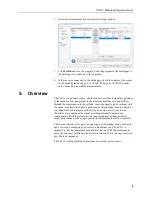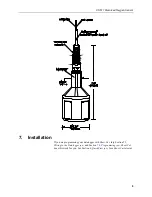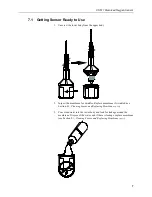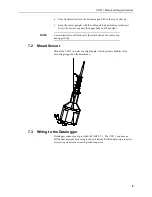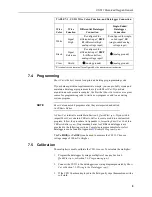
A-1
Appendix A. Importing Short Cut Code
Into CRBasic Editor
This tutorial shows:
•
Importing a
Short Cut
program into a program editor for additional
refinement
•
Importing a wiring diagram from
Short Cut
into the comments of a
custom program
Short Cut
creates files, which can be imported into
CRBasic Editor
. Assuming
defaults were used when
Short Cut
was installed, these files reside in the
C:\campbellsci\SCWin folder:
•
.DEF (wiring and memory usage information)
•
.CR2 (CR200(X)-series datalogger code)
•
.CR300 (CR300-series datalogger code)
•
.CR6 (CR6-series datalogger code)
•
.CR8 (CR800-series datalogger code)
•
.CR1 (CR1000 datalogger code)
•
.CR1X (CR1000X-series datalogger code)
•
.CR3 (CR3000 datalogger code)
•
.CR5 (CR5000 datalogger code)
•
.CR9 (CR9000(X) datalogger code)
Import
Short Cut
code and wiring diagram into
CRBasic Editor
:
1. Create the
Short Cut
program following the procedure in Section
. Finish the program. On the
Advanced
tab, click the
CRBasic Editor
button. The program opens in CRBasic with the name
noname.CR_
. Provide a name and save the program.
Once the file is edited with
CRBasic Editor
,
Short Cut
can no
longer be used to edit the datalogger program.
2. The program can now be edited, saved, and sent to the datalogger.
3. Import wiring information to the program by opening the associated .DEF
file. By default, it is saved in the c:\campbellsci\SCWin folder. Copy and
paste the section beginning with heading “–Wiring for CRXXX–” into the
CRBasic program, usually at the head of the file. After pasting, edit the
information such that an apostrophe (
'
) begins each line. This character
instructs the datalogger compiler to ignore the line when compiling. You
can highlight several lines of CRBasic code then right-click and select
Comment Block
. (This feature is demonstrated at about 5:10 in the
NOTE



